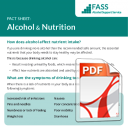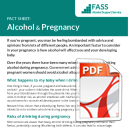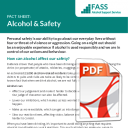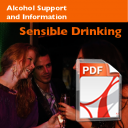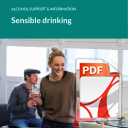Here we offer suggestions for drinking more safely and staying healthy. It's for people who are concerned that they may be drinking more than is safe and sensible.
Although a lot of people enjoy alcohol without coming to harm, many of us are at risk of developing a problem at some point in our lives. This can happen regardless of our age, gender or lifestyle.
Because drinking is such a normal activity in our society, we can sometimes forget that what we drink may actually be harming us!
In fact, you don’t have to be an ‘alcoholic’ to have a drinking problem. Most people with alcohol-related problems are not what we would term as ‘alcoholics’.
However, if you are already experiencing serious problems because of your drinking then it's time to get in touch with FASS Alcohol Support Services or your Doctor.
In Britain, we recognise that there is no absolutely safe level of alcohol consumption. However, the risk to your health and well-being can be minimised by drinking sensibly.
How much is too much?
Do you know how much you drink? Maybe you have a feeling you’re probably drinking too much, but you’re not sure? Health experts in Britain recommend that men and women drink no more than 14 units of alcohol per week.
It is recommended that your 14 units are spread evenly across the week and that you have regular drink free days. Your liver works hard to remove alcohol from your body so give it a decent rest for at least two days in the week. Alcohol can damage the liver and it needs time to repair itself.
Drinking your weekly quota or more in only one or two sessions will be harmful to your health. This is sometimes known as binge drinking and it’s never safe.
What is a Unit of Alcohol?
One unit of alcohol = half a pint of ordinary strength beer or lager (3.5% ABV) or a 25ml measure of whisky, gin or rum. A small 125ml glass of wine (12% ABV) contains 1.5 units. Remember that alcohol content can vary a lot in drinks like lagers and wines.
The total units of alcohol contained in a drink may be noted on the label of its bottle or can. Unit calculators are also available on the internet.
A note for women
Women's bodies absorb and process alcohol differently to men as they have a higher blood alcohol concentration. This increases the risk of liver disease, heart muscle damage and brain damage.
Drinking alcohol just before and during your menstrual cycle can make you feel more drunk than you normally would. This is because your metabolism slows down, which causes the alcohol to stay in your bloodstream for longer. If you can, try to avoid alcohol during this time.
Pregnant women should not drink alcohol. The latest research suggests that even small amounts may cause harm and can result in a baby born with Foetal Alcohol Syndrome. This condition affects a child's mental and physical development.
Don’t mix alcohol with medications
It may not be safe, so check with your Pharmacist or Doctor. The interaction of alcohol with your medication can change the effects of the medication, the alcohol or both. Also, if you have had too much to drink you may forget to take your medication, or more dangerously forget you have already taken it and as a result take too much.
Don’t mix recreational drugs with alcohol
Some might think that mixing drugs with their drink will increase the buzz but in reality it’s seriously dangerous. Alcohol slows down your nervous system and combined with other depressant drugs, it could shut down your body altogether.
Don’t drink and drive or operate machinery
There is no ‘safe’ amount to drink before driving because even small amounts of alcohol will affect your perception, judgement and co-ordination. It is best not to drink at all.
Sensible Drinking
Our Sensible Drinking booklet has more information and is available in the sidebar of this page. Sensible Drinking is just one in a range of free Alcohol Support and Information leaflets and booklets that can be downloaded here.


